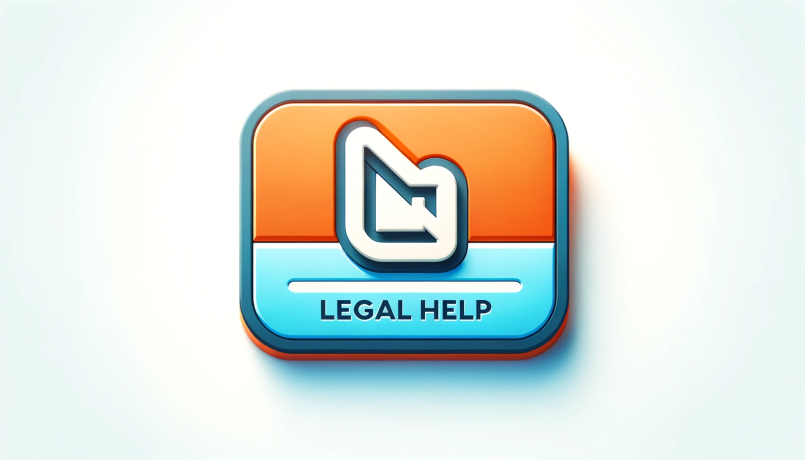
The shift towards digital assets in estate planning is a sign of the times, calling for thoughtful strategies to handle online accounts and properties. It's a relatable journey for modern families, balancing the preservation of both tangible and digital legacies for future generations.
by LawInc Staff
December 21, 2023
As personal lives and financial transactions increasingly digitize, valuable online assets accumulate warranting legacy planning consideration. However, adequately accounting for evolving digital properties through standard estate documents poses novel challenges regarding access, valuations and inheritance law applications.
This comprehensive guide serves as a roadmap covering critical considerations around digital assets in wills and trusts to inform and empower individuals in making sound decisions.
We explore topics like online account documentation protocols, ownership determinations, asset division inclusions, available legal execution paths and how to future-proof planning while limiting identity theft risks.
1. Prepare and Document Accounts
-
- Track Online Presences: Note all active email, social media, storage, financial, domain registrar logins.
- Compile Virtual Asset Records: Gather documents indicating online purchases, cryptocurrencies, loyalty points, digital media etc.
- List Associated Devices: Identify tablets, laptops, mobiles tied to accounts.
- Consolidate Financial Website Credentials: Payment services, money transfers, retail accounts.
- Note Privacy Settings: Multi-factor authentication, security questions, password manager links.
Examples:
-
- Mickey cataloged Gmail, Facebook, Flickr, Ancestry.com access.
- Liz compiled Venmo transaction reports, Apple gift card balance, eBay purchase records.
- Roy listed his primary desktop, old tablet and corporate mobile as tied assets.
- Ellen consolidated Paypal, 2 cryptocurrency exchange, online shopping passwords.
- Gary documented 2-step verification dependence on cell phone numbers for critical logins like banks.
How to Proceed:
-
- Sort copies chronologically in labeled password manager secure notes.
- Designate digital executors with account access to facilitate transfers.
- Scan identities, purchase receipts proving ownership rights.
- Encrypt files to securely transmit to heirs and executors.
- Cross-verify data annually noting major digital asset accumulations.
FAQs:
-
- What dates should financial website transaction exports cover? 1-2 years generally suffices barring large transfers.
- How strictly are digital ownership records enforced in different regions? Enforcement varies significantly not only globally but also between states or regions within countries. The application depends on specific local statutes and judicial discretion.
- What permission levels should designated online asset executors get? Account access without ownership conveys needed rights.
- Can I video record will signing to capture digital asset wishes? Yes, with consent from all participants as evidence.
- How might online providers challenge my heirs’ inheritance rights? Via Terms of Service agreements barring transfers.
2. Understand Digital Asset Ownership Nuances
-
- Review Website Terms Closely: User agreements with online providers may forbid transfers.
- Check State Statutes: Laws detailing digital asset inheritance rights evolve rapidly.
- Note Privacy Settings: Permission access rules impact heirs ability to take control.
- Weigh Sentimental Value: Digital photographs hold special significance for families
- Documentation Tangibility: Online records prove challenging to preserve physically over decades.
Examples:
-
- Facebook prohibits transferring accounts upon death beyond memorialization.
- California authorized email inheritance but compliance remains inconsistent.
- Locked devices prevent accessing iCloud photo archives despite provisions.
- Ancestral genealogy research data holds special legacy value for descendants.
- Digital wallet balances prove challenging to reliably document like cash or jewelry.
How to Proceed:
-
- Discuss account transferability, asset deletions and memorialization options.
- Formally document sentimental digital properties like photos in estate plans.
- Encrypt files avoiding physical possession challenges hindering heirs.
- Assign digital executors online account access to enable closing procedures.
- Stay on top of emerging case law shaping inheritance rights nationally.
FAQs:
-
- Can digital assets be divided among multiple heirs? The ability to divide digital assets among multiple heirs varies by platform. It is crucial to review each platform’s policies regarding asset division. In some cases, unanimous agreement among beneficiaries might be required for such divisions.
- What happens to digital materials with no designated heir?Assets may get destroyed or providers retain ownership per terms.
- How might virtual currency exchanges impede inheritance transfers?Via identity verification rules or custodial account access procedures.
- What is a “digital time capsule” in estate planning? Encrypted heirloom trove released on preconfigured schedules for posterity.
- Can online photos or videos hold up as legal will evidence? Yes, within authentication and credibility limits applying contextually.
3. Make Digital Asset Inclusions
-
- Catalogue Completely: Note all financial accounts, usernames, devices, passwords, cryptocurrencies.
- Highlight Sentimental Value: Email archives, photo albums, social media profiles.
- Designate Digital Executors: Establish online asset administration hierarchy.
- Specify Access Provisions: Permission transfer levels – full ownership, read-only rights etc.
- Weigh Memorialization: Posthumous utilization of profiles on platforms like Facebook.
Examples:
-
- Raj designated his son and lawyer co-executors of digital estate administration.
- Wendy left her entire Google Drive archive to daughter Cindy.
- Lee noted his rare online gaming artifacts as heritage assets for grandchildren.
- The Wilsons weighed pros and cons of memorializing their late son’s Facebook profile.
- Darrel’s will contained usernames granting read-only email permissions to heirs.
How to Proceed:
-
- Embed digital asset distribution directly within standard wills and trusts.
- Create supplementary digital estate instructions if detailing provisions extensively.
- Analyze account access hierarchies for assets requiring multiple representatives.
- Circulate instructions securely to heirs and executors guarding sensitive credentials.
- Update listings upon opening new online accounts or closing unused ones.
FAQs:
-
- What constitutes a “digital asset” in estate planning? Online accounts holding financial, personal, societal value either monetarily or emotionally.
- How might digital inheritance impact taxes? Assets transferred at death get valued forcing heirs to liquidate shares for payments if illiquid.
- What happens if designated digital executors decline administrator roles? Alternates gain hierarchy rights or assets get absorbed by residual estate clauses.
- Can minors legally inherit online financial accounts?Typically no – custodial workaround options vary globally.
- How long do online providers retain rights deleting inactive accounts post-death? policies range from immediate deletion to indefinite preservation.
4. Choose Digital Asset Transfer Methods
-
- Designate Access: Username/password listings aid account entry.
- Leverage Legacy Contacts: Formalized account beneficiaries with providers.
- Configure External Sharing: Family/executor Google Drive access enables centralized asset consolidation.
- Embed Instructions: Directly state asset transfer provisions within wills and trusts.
- Reference Separately: Dedicated digital estate distribution documents efficiently compartmentalize complex directives avoiding clutter across core planning paperwork.
Examples:
-
- Raj’s heirs accessed financial websites using supplied passwords.
- Alice designated her spouse as Facebook legacy contact.
- External file sharing on Dropbox enabled consolidated asset transfers.
- In his living trust Robert directly bequeathed online gaming heirs.
- Separate digital instructions supplemented Susan’s will provisions
How to Proceed:
-
- Discuss digital inheritance early – asset values can disappear quickly if accounts deactivated.
- Research online provider legacy and transfer designation options.
- Have heirs validate password access working by jointly testing account logins.
- Consult lawyers to verify estate documents cover online asset distribution legally.
- Stay organized – maintain updated listings of critical online credentials for heirs.
5. Secure Sensitive Credentials
-
- Leverage Password Managers: Encrypted digital vaults like LastPass provide centralized security consolidating login credentials.
- Enable Two-Factor Authentication: Multi-layered account access protection via text/email verification codes shields accounts.
- Create Account Recovery Methods: Backup email addresses, alternate phone numbers, multi-device approval flows offer redundancy if primary access disrupted.
- Grant Digital Executor Access: Provide next-of-kin authority on select financial logins facilitating asset consolidation upon death.
- Document Critical Details Securely: Emergency access instructions, password hints, account numbers, security answers enable heirs’ transition readiness.
Examples:
-
- Raj designated heirs as authorized users on high value investment portal logins.
- Alice routinely updated password manager vault shared with executors facilitating account entry after death.
- Virtual phone numbers provided inexpensive multi-factor authentication redundancy.
- In his safety deposit box Paul stored password list hard copies as contingency.
- Susan shared iCloud recovery contacts with next-of-kin and lawyers streamlining digital access.
How to Proceed:
-
- Use unique complex passwords across accounts and change credentials periodically.
- Store recovery codes offline in secure locations like bank safe deposit boxes.
- Discuss digital security planning with heirs and delineate account access tiers clearly.
- Explore insurer offerings around cyber identity theft protections transferring on death.
- Review authorized user and legacy contact policies across top online platforms.
FAQs:
-
- What happens if designated digital executors are uncooperative transferring assets to heirs? File grievances, leverage law enforcement or pursue civil arbitration as potential recourse avenues.
- How might estate lawyers assist with digital inheritance security planning? Help interpret online provider account access policies and craft compliant distribution instructions within legal documents.
- What are the risks associated with using public computers for sensitive online account access?Heightens account hijacking by exposing credentials and usage activity vulnerabilities through unsecured networks and hardware.
- How can heirs access a bank account if multi-factor authentication requires texts to a deceased person’s phone?To maintain access, heirs can request to preserve the deceased’s phone number via an Account Transfer Request. This approach allows for a temporary extension of the phone service, facilitating access to accounts secured by text-based multi-factor authentication. Planning such transitions in advance is crucial.
- How long should online passwords be for adequate security today?Experts recommend 16+ random characters – longer length critical over complex special symbols.
6. Maintain Updated Records
-
- Catalogue Assets Annually: Adding new online accounts, closing unused ones maintaining current flexibility.
- Review State Digital Asset Laws: Estate statute changes happen frequently regarding inheritance so research regularly.
- Monitor Provider Access Policies: Platform account transfer rules evolve over time – stay updated on terms of service agreements.
- Confirm Executor Partners Remain Available: Update documents if any designated decision-makers become unworkable based on location changes or personal dynamics.
- Routinely Purge Unused Accounts: Reduce security exposure and consolidate asset values into concentrated active portals – deactivate what no longer gets accessed.
Examples:
-
- When Frank relocated abroad permanently, he assigned US-based alternates handling stateside digital estate administration foreseeably.
- Policy shifts prompted Alice to double check and update her designated Google legacy contact fields ensuring compliance with new service injunctions.
- Converting unmatched loyalty program points into consolidated airline miles enabled Michelle to retain value in fewer accounts simplifying inheritance transfers.
- Evolving CLOUD Act regulations forced Emmaline to revise designated external file sharing access permissions internationally to avoid account deactivations.
- Routine digital spring cleaning identified and closed stagnant unused profiles vulnerable to security oversights streamlining assets into actively maintained accounts.
How to Proceed:
-
- Block advertising tracking cookies routinely purging your digital footprint across websites.
- Subscribe to industry publications monitoring policy impacts on inheritance planning.
- Set annual calendar reminders to revalidate documents and asset reports staying atop shifting landscapes.
- Discuss updated planning with heirs and share documentation through secure channels as evolvement occurs.
- Consider offsite redundant backup of records to guard against file corruption or technology failures.
FAQs:
-
- What might motivate closing down previously used online accounts? Consolidating assets into centralized locations, removing unused access vulnerabilities, decluttering records.
- If state digital inheritance statutes transform after creating estate documents, what next steps should execute? Review revised laws with attorneys to modify wills, trusts accordingly compliant with new orders.
- How often should password manager vaults get audited removing unused logins?Semi-annually ensures optimal balance of security scale and convenience.
- What potential accountability risks arise naming digital executors? They obtain elevated authority necessary to manipulate accounts maliciously if turning fraudulent.
- What happens legally in the US if heirs outside the country try digitally inheriting stateside assets? Complex jurisdictional variability makes multinational asset transfers extremely complicated currently.
7. Leverage Professional Guidance
-
- Engage Tech Specialists: IT consultants efficiently catalog digital properties coordinating transfers while navigating complex platform terms.
- Work With Attorneys: Lawyers interpret evolving state statutes and craft compliant distribution instructions embedding permissions directly into documents.
- Collaborate With CPAs: Accountants accurately appraise fluctuating online asset values and optimize tax planning as inheritors liquidate to cover estate tax obligations.
- Involve Financial Advisors: They strategically factor digital inheritance alignment into holistic multi-generational wealth blueprints balancing control against flexibility.
- Seek Cybersecurity Consultations: Experts establish robust identity protections securing sensitive logins through encryption, multi-factor authentication and recovery protocols.
Examples:
-
- Specialized forensic analysts inventoried Rebecca’s device files documenting valuable intellectual property projects for estate distribution Prep.
- Leveraging updated statutes, Amanda’s lawyer helped her formally designate digital executors legally on financial accounts to access assets for consolidation when necessary.
- Collaborating with heirs, CPA estimations aimed to quantify Tyrell’s cryptocurrency portfolio tax obligations seeking minimize liquidation impacts.
- Proactively, Walter’s financial advisor structured trusts balancing estate tax minimizations against maximizing flexibility for dynasty inheritances as directives evolve.
- Ongoing ethical hacking simulations improved Orson’s online business intrusion detection preparedness hardening defenses against potential cyberattacks.
How to Proceed:
-
- Define clear scopes of work delivering specialized knowledge cost-effectively when engaging outside experts.
- Research consultant qualifications thoroughly – digital inheritance spans multiple disciplines requiring niche expertise.
- Strategically share documentation access granting only appropriate permission levels to advisors.
- Coordinate meetings ensuring all decision-makers are aligned on service agreements.
- Provide complete transparency around objectives so professionals customize optimal solutions.
FAQs:
-
- What core specialty should lawyers focusing on digital asset administration ideally have? Estate planning expertise also covering fiduciary laws around trusts and wills.
- How might financial advisors add value when planning asset transfers to future generations? Quantifying tax implications, structuring trusts, counseling on wealth preservation to balance control versus flexibility.
- What risks arise from naming accountant digital executors granting financial access? Potential abuse managing transfers unethically if oversight lacking but professional standards help mitigate considerably.
- Why bother documenting details around online accounts with monetary values seeming insignificant today? Speed of exponential digital asset growth warrants accounting for future appreciation potential beyond current nominal valuations.
- How frequently should organizations review cybersecurity preparations amid rapidly evolving digital threats? Annual evaluations of controls, audits, awareness training, and insurance protections keep risk tolerances calibrated cost-effectively.
8. Embrace Partnership Within Families
-
- Communicate Regularly: Conversation sustains trust, transparency and relationship bonds over decades facilitating collaborative inheritance planning.
- Discuss Values Across Generations: Articulating emotional connections, cherished memories and hopes for legacies inspires clear, thoughtful directives.
- Address Family Concerns Proactively: Compassionately listening to doubts or irritations early on enables cohesion.
- Role Model Healthy Behaviors: Next generations learn core money attitudes through observed behaviors as youths impacting future conduct.
- Establish Regular Gatherings: In-person celebrations sustain bonds persisting digitally after death via collaborative recollection.
Examples:
-
- James privately asked each heir about estate transfer concerns to craft accommodations proactively preventing conflicts.
- The Schumachers held annual memory sharing ceremonies reading digitally preserved travel journals together sustaining nostalgia.
- Cindy and her siblings collaboratively curated nostalgic playlists and photo albums on shared cloud drives posthumously commemorating Mom through creative collaboration.
- Evan’s patience and empathy hearing objections eased sibling tensions over perceived digital asset inequities prioritizing family harmony.
- Michelle’s candid financial transparency set positive money management examples for descendants profoundly emphasizing savings discipline.
How to Proceed:
-
- Create rituals like grandparents gift writing digitally preserved letters conveying wisdom when grandchildren turn 18.
- Co-design ethical digital assets stewardship philosophies with heirs collaboratively instilling values.
- Debrief beneficiary disputes empathetically post-resolution to fortify bonds avoiding future estate planning acrimony.
- Simulate digital asset consolidation execution drills confirming executor access authorities technically.
- Conduct informal interviews or surveys periodically identifying evolving multi-generational inheritance priorities.
FAQs:
-
- What interpersonal approaches best enable constructive conversations around sensitive digital inheritance decisions? Non-judgmental listening, calmly validating differing perspectives, compromising creatively, and focusing discussions on joint problem-solving.
- How might parents intuitively make wiser choices on digital asset transfers observing children’s behaviors? Noticing indications of responsibility, values alignment, anddetachment from materialism positively informs customized division planning catering to needs.
- What risks arise when excluding certain family members from estate planning dialogue? They may feel isolated prompting relationship fallouts or legally contest directives seeming unreasonable without proper context.
- Why open digital inheritance conversations early despite the discomfort discussing mortality? Surfacing concerns promptly allows more time intentionally nurturing mutual understanding minimizes complications later on.
- How might families digitally archive memories together to sustain emotional bonds transcending death? Building collaboratively edited nostalgia troves, participating in oral history projects, producing keepsake media content spanning generations.
9. Create Long-term Contingencies
-
- Automate Instructions: Configure digital time capsules with asset release schedules for future generations.
- Build Review Cycles: Calendar periodic validation of access credentials, policy terms, product features.
- Explore Emerging Technologies: Monitor digital inheritance solution innovation adapting platforms accordingly.
- Structure Flexibility: Allow for directive evolution empowering advisors and heirs stewards modifying plans.
- Consider Cyclical Asset Transfers: Balance ongoing access across generations through ethically aligned scheduled distributions.
Examples:
-
- Michelle’s posthumous video messages granted each grandchild wisdom at key adulthood milestones.
- The Chen family’s estate lawyer reviewed asset holdings annually to preempt policy conflicts.
- SaaS solutions enabled James to delegate digital inheritance account oversight securely.
- Amanda’s heirs voted democratically on asset utilization aligned with her charitable vision.
- Cindy and siblings created an online family bank allocating digital property usage fairly over time.
How to Proceed:
-
- Study trends in digital inheritance management tools as primers for innovation adoption.
- Discuss contingency planning openly – unforeseen circumstances arise, so build in agility.
- Align asset usage philosophies with values of heirs and grantees contractually.
- Incorporate conditional rules into ownership transfers balancing oversight with autonomy.
- Grant reasonable administration flexibility empowering fiduciaries navigating uncertainty.
FAQs:
-
- What potential issues arise if digital asset estate plans lack structured review protocols long-term? Account access credentials may expire, provider policies evolve restricting transfers, or consumer protections update necessitating modifications.
- How could inheritors balance honouring original legacy wishes with flexibly modifying management as technologies/needs change? Encode ethical principles guiding decisions rather than prescribing inflexible controls – doing so sustains founder intent through fluid interpretation.
- What innovative legal mechanisms might enable cascading digital asset allocations across generations? Structures like dynasty trusts, smart contracts or cryptographic time-locks phase conveyances incentivizing stewards to preserve capital progressively.
- If co-owning digital assets, how might families cooperatively govern usage decisions ethically? Embed shared values into terms of service agreements, incorporate voting procedures, assign impartial mediators or conservation oversight committees.
- Why bother projecting contingency protocols beyond immediate heir transitions? Digital properties may appreciate exponentially so planning ownership cascades over decades sustains family prosperity while retaining account access.
Conclusion
Digital technologies continue transforming society, so evolving estate planning to secure online inheritance smoothness promises increasing importance.
While administering digital assets presents new complications like copyright constraints or identity verification requirements, solutions emerge parallel bridging capability gaps.
Collaborating across disciplines, interpreting complex policies and nurturing family communications sustains optimal readiness amidst exponential digital asset growth.
The inertia around updating traditional wills and trusts generates risks as virtual properties remain excluded from legacy protocols. However by taking inventory, detailing access in writing and consulting lawyers, individuals can pave the way for seamless inheritance stewardship despite technical disruptions across the decades ahead.
Need Estate Planning Assistance? Contact Us.
Contact us to be connected with an estate planning attorney that can confidentially discuss digital asset estate planning tailored to your situation.
Test Your Estate Planning Knowledge
-
- 1. Online accounts transferring through estate planning are termed _________.
- A. Digital legacies
- B. Virtual inheritances
- C. Digital assets
- D. Online properties
- 2. Lawyer review of estate documents helps ensure _________ compliance.
- A. Judicial
- B. Digital
- C. Statutory
- D. Ethical
- 3. Two-factor authentication protects online accounts by requiring ________ alongside passwords.
- A. Biometrics
- B. Security keys
- C. Verification codes
- D. All of the above
- 4. Software facilitating secure password storage and access sharing is known as a ________.
- A. Credential manager
- B. Recovery agent
- C. Digital executor
- D. Legacy designator
- 5. The legal concept of __________ prevents online providers from directly inheriting user accounts by default.
- A. Digital escheatment
- B. Virtual custodianship
- C. Account descent
- D. Asset reversion
- 6. ____________ involves ethically granting account access to digital executors managing assets.
- A. Credential sharing
- B. Asset partitioning
- C. Beneficiary designation
- D. Successor specifying
- 7. Which legal role is empowered to help interpret digital inheritance laws?
- A. Paralegals
- B. Estate attorneys
- C. Cybersecurity analysts
- D. Forensic accountants
- 8. Contractual asset usage terms aligned across generations are known as _______.
- A. Digital covenants
- B. Online easements
- C. Technology encumbrances
- D. Virtual endowments
- 9. Backup contacts used in account recovery or posthumous memorialization are termed ________.
- A. Legacy delegates
- B. Succession coordinators
- C. Inheritance administrators
- D. Digital fiduciaries
- 10. The legal principle that certain online platforms own user-generated content by default is known as _________.
- A. Virtual custodianship
- B. Digital escrow
- C. Content entitlement
- D. Electronic tenancy
- 11. Compiling a comprehensive inventory of digital assets is called ________.
- A. Online cataloging
- B. Virtual archiving
- C. Digital detailing
- D. Electronic asset tracking
- 12. ________ involves ethically collaborating with online platforms managing accounts post-death.
- A. Account maintenance
- B. Legacy facilitation
- C. Inheritance enablement
- D. Successor delegation
- 13. Capturing sentimental digital content like photos or emails is termed ________.
- A. Online remembrance
- B. Virtual memorializing
- C. Digital nostalgia retention
- D. Electronic keepsakes
- 14. Systematically transferring digital assets through scheduled distributions is known as _______.
- A. Cascading allocation
- B. Interval conveyance
- C. Legacy rotation
- D. Chronological endowment
- 15. Trustees legally bound to transfer digital properties per estate documentation are called ________.
- A. Online executors
- B. Digital fiduciaries
- C. Virtual administrators
- D. Electronic representatives
- 16. Which specialists help appraise online asset values upon death?
- A. Accountants
- B. Actuaries
- C. Estate attorneys
- D. Financial advisors
- 17. __________ prevents assets from transferring automatically to providers upon account termination.
- A. Digital escrow
- B. Online custodianship
- C. Virtual reversion
- D. None of the above
- 18. ___________ requires digital executors ethically limit account usage aligned with asset owner intents.
- A. Electronic restraint
- B. Online fiduciary duty
- C. Virtual encumbrance
- D. Digital bond
- 19. Backups containing posthumous personal messages for heirs are known as _______.
- A. Digital time capsules
- B. Online lockboxes
- C. Virtual reliquaries
- D. Electronic repositories
- 20. To cover estate taxes, inheritors must _______ proportionate shares of illiquid digital assets.
- A. Liquidate
- B. Release
- C. Relinquish
- D. Auction
- 21. ____________ refers to ethically accessing online accounts according to applicable laws.
- A. Digital entry
- B. Legal login
- C. Virtual visitation
- D. Authorized access
- 22. Complying with online Terms of Service often requires ____ before transfers.
- A. Asset extraction
- B. Account cancellation
- C. Provider consent
- D. Terms deletion
- 23. Laws frequently requiring updates regarding digital asset administration involve ________.
- A. Usage statutes
- B. Access regulations
- C. Inheritance codes
- D. Security guidelines
- 24. _____________ help identify and preserve valuable digital materials through organized collaboration.
- A. Online executors
- B. Asset assessors
- C. Domain brokers
- D. Estate distribution teams
- 25. Comprehensive lists of digital accounts with access credentials are termed _________.
- A. Online indexes
- B. Virtual repositories
- C. Digital asset inventories
- D. Electronic registers
- 26. _______ planning balances locking in distribution directives with flexibility allowing future custodians decision authority.
- A. Structured
- B. Conditional
- C. Contingent
- D. Contractual
- 27. Which digital properties carry potential emotional significance for inheritors?
- A. Online bank accounts
- B. Domain registrations
- C. Email archives
- D. Payment credentials
- 28. _________ pertains to ethically accessing digital materials honoring decedent dignities.
- A. Legal entry
- B. Moral inheritance
- C. Virtual visitation
- D. Conditional custody
- 29. Which legal mechanism extends asset access across generations through scheduled distributions?
- A. Private blockchain
- B. Digital trust
- C. Cryptographic will
- D. Virtual custodianship
- 30. Account ____________ involves ethically facilitating asset transfers or identity verifications.
- A. Validation
- B. Backup
- C. Recovery
- D. Remediation
- 31. _____________ pertain to posthumous usage terms or asset ownership philosophies.
- A. Digital covenants
- B. Online encumbrances
- C. Virtual easements
- D. Technology use agreements
- 32. Which specialists help heirs comply with digital inheritance tax regulations?
- A. Estate lawyers
- B. CPAs
- C. Technical consultants
- D. Financial advisors
- 33. Compiling detailed asset records and accession instructions is termed ________.
- A. Digital cataloging
- B. Online documenting
- C. Virtual detailing
- D. Electronic inventorying
- 34. ________ pertains to securely sharing account credentials or device access with designated online fiduciaries.
- A. Asset partitioning
- B. Beneficiary designation
- C. Identity entrustment
- D. Credential conferral
- 35. _________ involves analyzing estate plans to confirm digital asset integration compliance.
- A. Document auditing
- B. Terms reviewing
- C. Policy screening
- D. Legacy verification
- 36. Which software technology extends access control across digital asset transitions?
- A. Blockchain
- B. Smart contracts
- C. Easement agreements
- D. All of the above
- 37. __________ pertains to ethically accessing digital materials respecting decedent dignities.
- A. Virtual visitation
- B. Conditional custody
- C. Moral inheritance
- D. Right of entry
- 38. Which specialists help heirs comply with digital inheritance tax regulations?
- A. Cybersecurity analysts
- B. Forensic accountants
- C. Technical consultants
- D. CPAs
- 39. Language guiding asset usage across generations pertains to ________.
- A. Digital covenants
- B. Virtual easements
- C. Technical encumbrances
- D. Electronic endowments
- 40. Comprehensive digital estate planning helps prevent identity theft by ________.
- A. Ignoring online financial accounts
- B. Consolidating important credentials
- C. Sharing passwords publicly
- D. Restricting security protections
- Answers:
- 1. C. Digital assets
- 2. C. Statutory
- 3. D. All of the above
- 4. A. Credential manager
- 5. A. Digital escheatment
- 6. A. Credential sharing
- 7. B. Estate attorneys
- 8. A. Digital covenants
- 9. A. Legacy delegates
- 10. C. Content entitlement
- 11. D. Electronic asset tracking
- 12. B. Legacy facilitation
- 13. D. Electronic keepsakes
- 14. B. Interval conveyance
- 15. B. Digital fiduciaries
- 16. A. Accountants
- 17. A. Digital escrow
- 18. B. Online fiduciary duty
- 19. A. Digital time capsules
- 20. A. Liquidate
- 21. D. Authorized access
- 22. C. Provider consent
- 23. C. Inheritance codes
- 24. D. Estate distribution teams
- 25. C. Digital asset inventories
- 26. C. Contingent
- 27. C. Email archives
- 28. B. Moral inheritance
- 29. B. Digital trust
- 30. C. Account recovery
- 31. A. Digital covenants
- 32. B. CPAs
- 33. D. Electronic inventorying
- 34. D. Credential conferral
- 35. A. Document auditing
- 36. D. All of the above
- 37. C. Moral inheritance
- 38. D. CPAs
- 39. A. Digital covenants
- 40. B. Consolidating important credentials
- 1. Online accounts transferring through estate planning are termed _________.
Also See
Disclaimer
The information provided in this article does not constitute formal tax, legal or professional advice. Please consult with qualified experts, in your state, regarding your particular circumstances.












